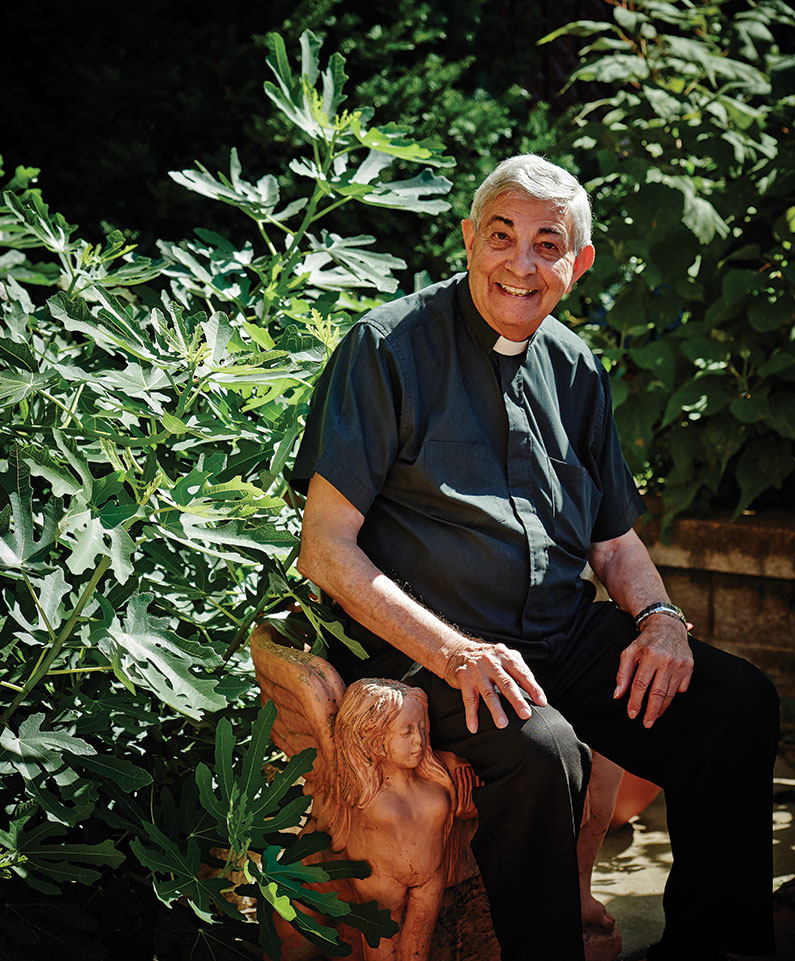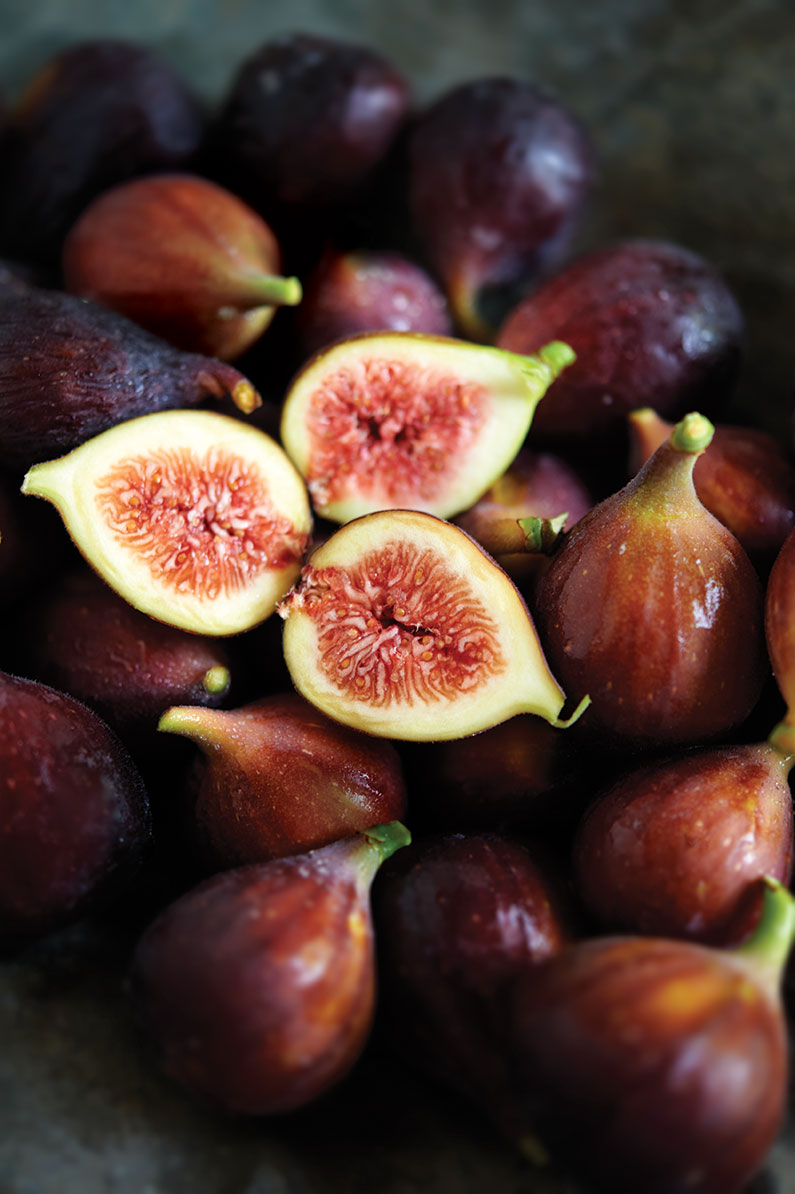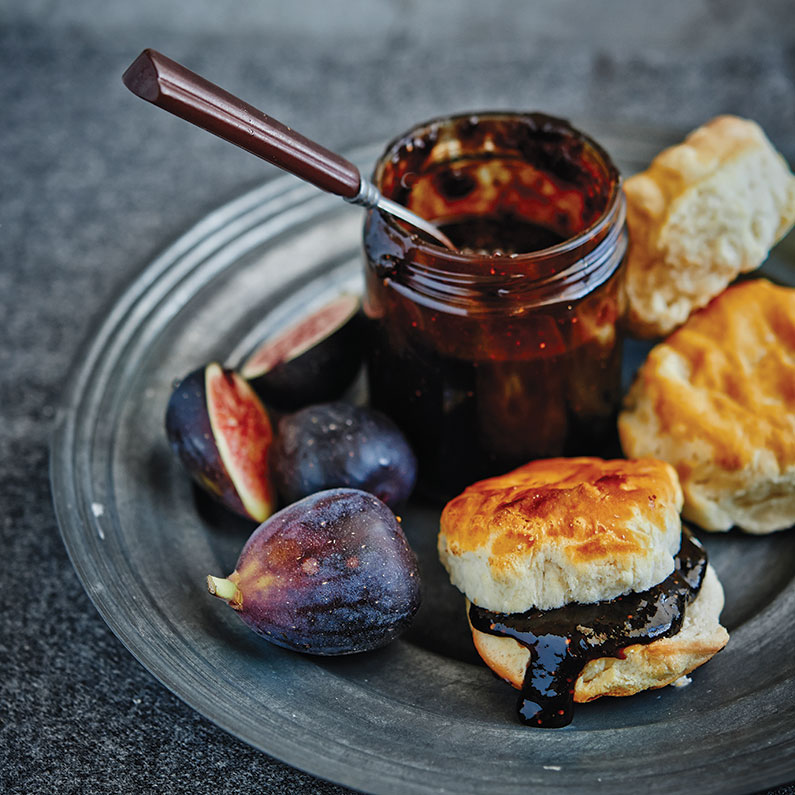The Secret Fig Society: How an ancient fruit took root in the Midwest
“Why do you want to know about figs?” a voice asked me over the phone. It was Monsignor Sal Polizzi of St. Roch Catholic Church in the Skinker DeBaliviere neighborhood, and he wasn’t so sure I needed to know. His fig tree, a heavy-limbed beauty that has produced a mother lode of fruit each year, has multiple trunks, graceful and twisted and dramatic, visible when the foliage drops, and leaves that slowly fan the air in the breeze. Another phone call to Ivan Stoilov of Ivan’s Fig Farm in Dittmer, Missouri, and I was beginning to wonder if there was a secret society of fig people.
“Why do you want to know about figs?” Stoilov asked. He seemed to regard me with equal suspicion.
Keep in mind, I had spent several weeks trying to reach Stoilov, leaving phone messages and emails for this article. Now I felt I had to come up with a good answer.
At such an on-the-spot moment, “I like figs” was the best I could do.
But it’s true: Fresh figs have captured my imagination and wooed my taste buds for many years. There might be no better flavor than ripe, sweet fig with a drip or two of honey.
The St. Louis area is maybe the most beguiling source of figs in Missouri. Stoilov’s and Polizzi’s fine-looking fig trees in particular had been rumored as prodigious producers of fat, luscious fruit. Plus, murmurs abound about St. Louis grandmothers with fig trees in their backyards, and neighbors who harvest basketfuls of figs in summer. St. Louis seems to provide the Missouri mother lode – I live 120 miles west of the city, near Columbia, and no figs live here. Or, at least, gardeners I know don’t typically grow them.

It’s possible this disparity can be traced to nostalgic Italian settlers in St. Louis during the 19th century and later, who appear to have planted saplings in the city but not central Missouri. Polizzi’s tree is younger, having come by way of a friend in southern Italy around a decade ago. The mother tree germinated and grew in the Sicilian town of Montelepre, birthplace of Polizzi’s father.
At St. Roch, petunias spill from makeshift pots devised from old light fixtures and the figs pop from their tree in the charming garden behind the parish house. Polizzi also grows parsley, chicory and tomatoes, and he can produce a kaleidoscope of heritage seed packets in a brown paper sack for proof. Each November, as the garden goes dormant, Polizzi boxes up his fig tree with four standing sheets of plywood and a nailed-down top. Sometime in April, he releases the tree to the wild spring air. The boxing-up process is elaborate, but winter precautions are a must in Missouri, and this past year, even that may not have been enough: When Polizzi opened the fig box this spring after the hardest winter in years, the tree looked dead.
“I said, ‘Dear God, what’s happened to my tree?’” he recalled. “It was magnificent. It’s the center of the garden.”
But by June, in a burst of survivor spirit, his tree grew new shoots with leaf buds around its base. Similar tendrils thrust out of the thicker, hard central wood, too.
“It has a strong will,” Polizzi said. “Nine trees (elsewhere in the neighborhood) died this winter. We’ve never had that happen here.”
But fig trees grew in St. Louis long before Polizzi’s fighter. As a boy, he remembered trees growing in backyards up and down Eighth and Carr streets, five blocks north of Washington Avenue downtown. Children pulled figs off the trees as snacks while families spent time outside, especially at dinnertime for outdoor barbecues. “We had a brick oven for pizza, and my mom liked to bake bread,” Polizzi said. “Yard after yard after yard. Everybody did that.”
As he said this, he pulled a blade out of a drawer and rocked it between his palms. “This was (my mother’s) knife. It still cuts.” Fresh, ripe figs, he added, are hardly in need of a blade, something he learned in the twilight hours of dinner as a child and hasn’t forgotten.
“Sometimes,” he said, “I don’t even peel them. Sometimes I don’t even wash them.” Polizzi, who has only sprayed his tree for pests once in its lifetime, feels the taste is enough to overcome such scruples.

Bulgaria in Missouri
Though they’re somewhat difficult to grow in Missouri, the desire for fresh figs struck Stoilov, too. An 18-year veteran of growing figs here, Stoilov is an organic chemist and biochemist from Bulgaria who owns Ivan’s Fig Farm. He also works at Washington University in St. Louis as a senior research scientist. At his property in Dittmer, surrounded by lush tree cover, he keeps four greenhouses of fig trees and other organic produce.
“Genetically, the taste for figs is in every one of us,” he said. “Figs are a very ancient food. We all have a taste for it. It’s why everyone probably likes (fresh) figs.”
Stoilov is likely correct. The fruit figures heavily into ancient tree lore, and may have even been among the first cultivated food 11,000 years ago in the Middle East, according to a 2006 article in Science. Many world traditions are enamored with figs: Adam and Eve, according to the Hebrew origin story, covered themselves with the leaves of the common fig tree (Ficus carica), which is also one of the two sacred trees (along with the olive) of Islam. The Bodhi Tree that Buddha meditated under is a sacred fig (Ficus religiosa), also hailed as the Ashvattha, or “world tree,” of Hinduism. Not only was the fig included among the seven foods to be found in the Promised Land, according to the Torah, it was believed by the ancient Greeks to be the gift of Demeter. It’s safe to say figs play a prominent role in human history – which certainly explains our taste for Newtons.
Stoilov, who ate luscious figs in Bulgaria growing up, liked the dried variety well enough, but wasn’t totally satisfied. He wanted that fresh taste at home in St. Louis. In order to get it, he began experimenting to find the best way to grow large and delicious figs that could survive Missouri winters. He found it through science – and a bit of elbow grease.
Stoilov created a control group by planting fig trees in rows outside his greenhouses and in front of his house. Each winter, he weighs them down and mulches them.
“I bend the branches down and cover them with leaves (in late fall),” Stoilov said. “I put the coarse leaves on the bottom and the mulched leaves on the top so the wind doesn’t move them.” The leaves keep a layer of air between the constant ground temperature of 55 degrees and the fig tree branches. The biodegrading, composting leaves generate heat as well. Southward-facing exposure to the sun is best.
But he wanted a less labor-intensive way to grow the taste of home. “I decided to really go into it and applied for a (Sustainable Agriculture Demonstration Award) grant in 2005. I got it right away.”
Since receiving that grant from the Missouri Department of Agriculture, Stoilov has tried heating his greenhouses in winter with spent cooking oil, and more recently with a modified passive heat exchange using what he called a “geosolar heat sink”: 5,000 feet of layered pipes 3 feet under his greenhouses.
It’s easy to see (and taste) the success Stoilov has had. Even this year, the fig trees seemed happy with the temperature – the harvest has vouched for this – but Stoilov still checked it with a thermometer on a string. He stood over a vent as a fan helped trap the heat underground, dangling the thermometer for a moment and squinting at the reading; satisfied, he pulled the gauge back up.
“I like the dark purple figs – big, wide and delicious,” Stoilov said as he pointed to a newly leafing tree in March. “(Under) every leaf there is a fig.” Indeed, in his greenhouses, his trees can grow 10 to 15 feet in a year, with a fig growing at the base of each leaf.

Neighborhood figs
Tree lore and humanity’s shared fig interest seems to have struck Joe Gudiswitz, too. A civil engineer by day and husband of Sauce executive editor Ligaya Figueras, Gudiswitz grows figs in the family’s backyard in St. Louis city. He likes the idea of a garden as a “collection of curiosities,” and started with two Turkish Brown fig trees. “They grow like a weed,” he said, “with shoots a little like grapes.”
His garden is shady and his fig trees are not prolific. “The (fruit) basically goes hand to mouth. There’s so few of them.” So far, he said, the birds haven’t discovered them, though a nearby peach tree may serve as a distraction. Again, southward-facing exposure to the sun and more heat would help the harvest, he added. “The (fig trees) definitely like hot summers.”
Gudiswitz also weighs the limbs down and covers them with leaves each fall for protection from the cold. This winter, the prolonged cold kept the trees dormant longer in the spring. Though the larger hardwood on his fig trees didn’t make it through, by mid-summer Gudiswitz had fig buds. “They’re forgiving with a little bit of care,” he said. “They are a pretty plant. I always liked (having) a little bit of the Mediterranean in the alley.”
Another local fig tree enthusiast, Sauce photographer and food lover Greg Rannells, has two Chicago Hardy fig trees which, optimized for cold weather and left untended, grew 16 feet tall one year in his yard in Maplewood. “I felt like a monkey getting the fruit off the branches.” Now, he prunes. “This year, (the trees) are 8 feet tall. I typically get about 650 figs per tree.” While new growth normally emerges from the trunk structure on Rannells’ trees, after this winter, most of it is coming up from the ground around the tree. This has made his trees more like bushes, but the leaves and fruit buds still showed good signs in early August.
Once again, the key seems to be sunny southern exposure. His flagrant fig proficiency helps corroborate the rumors of abundant fig growth in St. Louis. For Rannells, the key driver is flavor.
“Honestly,” he said, “Most people have never had a fresh fig, and when they do, they’re astonished.”

Bucket brigade
Chef-owner Josh Galliano of The Libertine in Clayton does not grow figs in St. Louis, but early fig picking left its mark on him, as with Stoilov and Polizzi. Galliano had his first experiences as a child 30 miles west of New Orleans, where there was a short fig season in July from the first through the middle of the month. “It was so hot, the fruit was fermenting on the trees,” he said. “Wasps and birds were after them.”
He picked the figs in 5-gallon buckets, munching as he went, to use in his grandmother’s fig preserves, which were spread over her biscuits. (Both went well with her skillet-fried ham.) After picking the 12 to 16 quarts needed for the preserves, Galliano would be coated in a latex-like sap. “The sweetness was almost soda-like. It’s a fleeting flavor: floral, light, not on the tongue long.”
Today at The Libertine, in part because of those moments with figs, Galliano focuses on food and memory. “I try to make food that’s fun and nostalgic,” and figs, too, make their way onto the menu. “I make fig preserves with balsamic, orange zest and either cinnamon or anise. It’s one component of the dish – good on foie gras or pork. I add extra balsamic and honey to spread it on pork loin.”
He finds that, sometimes, simple is best. “Black mission figs can be coated with powdered sugar or sugar in the raw, but it’s more for presentation.” Figs are usually such a soft fruit, he said, that simply wedging them, coating them with a bit of sugar, and blow-torching them to give them a little crunch is enough.
When in season, figs show up on The Libertine’s menu. Galliano contacts local fig growers like Stoilov when possible, or even goes south to his father’s home in Louisiana to retrieve that flavor. “My dad will pick and freeze figs for me,” he said. “I get about 10 pounds of figs each time.”
For Polizzi, Stoilov, Gudiswitz, Rannells and Galliano – fig lovers all – the little extra tending or fetching needed for fresh fig taste in Missouri makes for hard, if worthy, work. Those of us in central Missouri may just need a better garden work ethic.
Nina Furstenau is the author of Savor Missouri: River Hill Country Food and Wine and the memoir Biting Through the Skin: An Indian Kitchen in America’s Heartland, which won the Les Dames d’Escoffier International M.F.K. Fisher Book Award and Grand Prize Award for 2014. She lives in central Missouri, fretfully tending her first fig tree.
Tags : People






